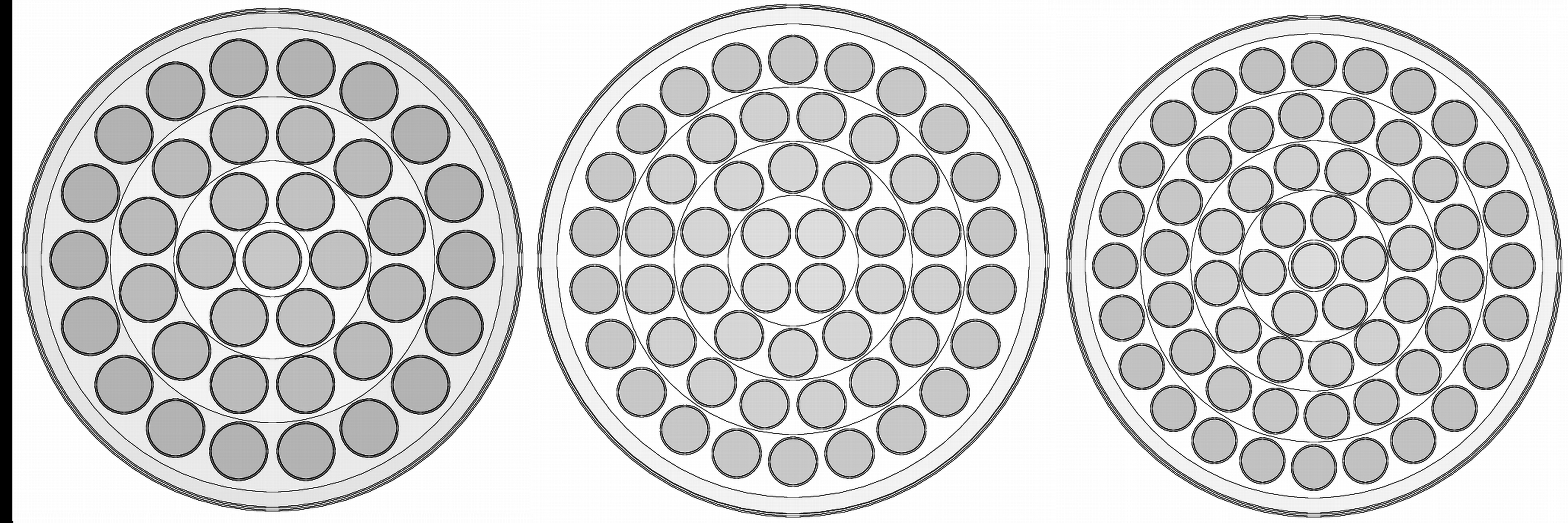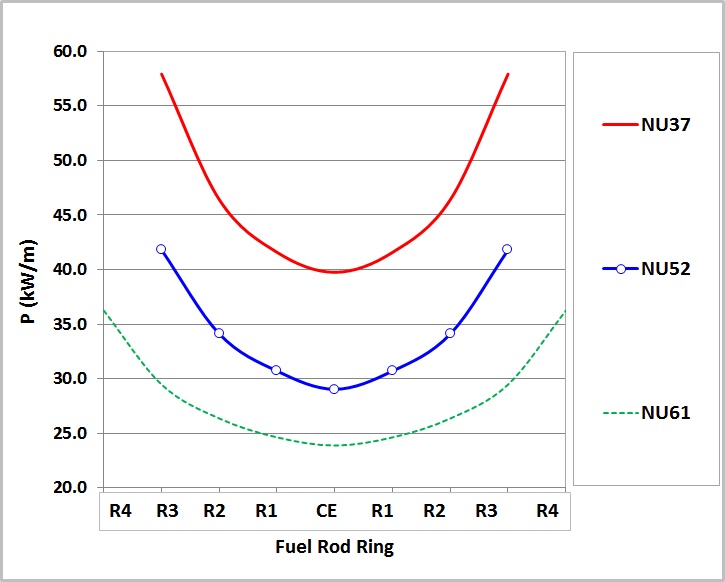Investigations for Use of Advanced CANDU Bundles Designs with Increased Numbers of Elements
The evolution of CANDU fuel bundle design started in the sixties of the previous century with the 19-elements Nuclear Power Demonstration (NPD) fuel bundle. In time, the experience gained by thousands of reactor-year operation showed that improvements in flow, burnup and power distribution flattening can be brought by simply increasing the number of elements. As result, thirty years later from the first bundle design launching, the CANDU fuel bundle geometry passed successive through 28, 37 and 43 fuel element designs, the elements becoming thinner and thinner. This tendency has been pushed forward, thus nowadays there are proposals with further increasing of the elements’ number. For example, Argentina successfully developed and is using in Atucha Nuclear Power Plant (NPP) the CARA (Combustibile Avanzado para Reactor Argentinos) bundle design, based on 52 equal elements while India fostered a 61-rods bundle design suitable for use in the Indian Advanced Heavy Water Reactors (AHWR). In Romania, the Nuclear Fuel Performances Group from RATEN ICN Pitesti proposed two approaches of bundle designs with more than 37 elements, namely the NU52 and NU61 designs. The first one is similar to the well-known CARA design while the second one was inspired by an earlier AHWR Indian bundle design approach. The aim of the new bundle concepts targets improvements of the radial power distribution inside of the bundle to further allow for power uprates along with safety margin increasing benefits.

The NU52 and NU61 bundle designs are fuelled with Natural Uranium (NU) and their neutronic lattice and core integral parameters are compared to those of the standard 37-rods NU CANDU fuel, here denoted as NU37. A higher number of fuel elements with smaller diameter, comparatively to NU37 standard fuel, enable to reach lower element linear power while preserving, at least, the average discharge burnup.

Safety benefits are revealed through the lattice calculations, representing the Outer Element Linear Power (OELP) with respect to the fuel ring. For an ideal radial power flattening inside of the fuel bundle the OELP curve should be a horizontal line, but this is not the case, neither for a fair computer simulation, nor for the experimental data coming from real operation of a NPP. Nevertheless, there are important OELP differences between the advanced bundle designs and the standard one. The NU52 and NU61 present maximum values for OELP substantially lower than that of the NU37 bundle design (42 and 37 kw/m vs. 57 kW/m). Since the WIMS model used is limited to only supply the ring power shares, a CANDU bundle power license limit of 935 kW was supposed in order to derive the above-mentioned maximum element linear powers.

To simulate with more accuracy the fuel burnup, core calculations have are needed, loading the entire CANDU core with lattice nuclear fuel properties, previously generated. After performing 500 Full Power Days (FPD) Core Follow Simulations (CFS) using the DIREN 3D finite differences diffusion-based program, synthetic pictures with fuel irradiation histories have been generated. The irradiation histories here represent the evolution of the OELPs with respect to the fuel burnup. The actual CANDU standard fuel performs well, showing a maximum OELP value of 56 kW/m, while all the OELP values are situated under the 1% failure curve. The NU52 fuel design emphasizes a significant reduction in OELP values, from 56 kW/m to 40 kW/m, this translates in about 28% lowering the outer element thermal stress. Benefiting for 5 rings to spread the power on its 61 fuel elements, the NU61 bundle design led to the lowest OELP values in the series, only a maximum OELP value of 35 kW/m was recorded after performing 500 FPD core follow simulations. This is the lowest OELP value achieved by now through a CFS analysis in normal operation conditions for a CANDU fuel bundle sort. This achievement opens the way to power uprate possibilities by increasing the bundle and channel power operation margins due to the better power flattening inside the fuel bundle with advanced geometries.
The CFS results are more confident than those from lattice calculations due to the more realistic 3D core approach and a sufficient FPD extent of the burnup simulations. Nevertheless, the OELP lattice and core evaluations are quite close to prove the accuracy of the developed models. On the other hand, the DIREN 3D finite difference CANDU core simulation program is credited with the same degree of confidence, due to previously fully benchmarking comparisons with the Reactor Fuelling Simulation Program (RFSP)-an unsurpassed core analysis reference program in the Canadian Industry Standard Tools (IST), actually used in the majority of CANDU stations around the world.
Dr. Iosif PRODEA
RATEN ICN
iosif.prodea@nuclear.ro